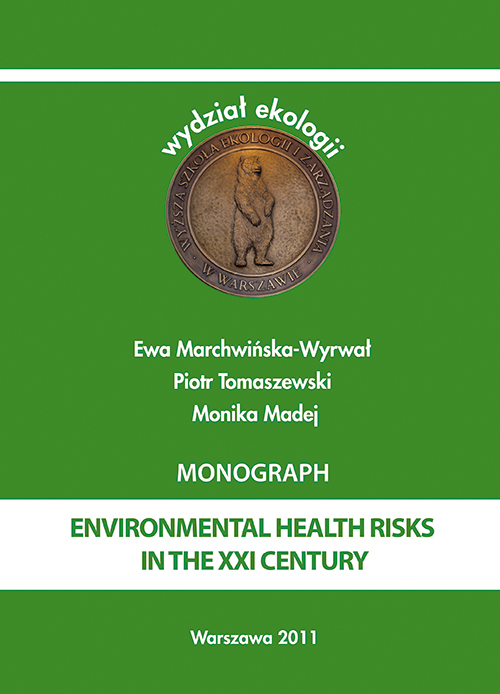O publikacji
O publikacji
Autor: Ewa Marchwińska-Wyrwał, Piotr Tomaszewski, Monika Madej
Wyd.: 2011
The twenty-first century is the age of increasing environmental contamination with chemicals. The air we breathe contains xenobiotics coming from the emissions from many different sources as industry, motor vehicles, heating and household fuels and indoor contaminants emitted from furniture, carpets, wallpaper as well as tobacco smoke. In conventional food we can find preservatives, pesticides, herbicides and others. Many of these contaminants may accumulate In the human body where, after exceeding a specified dose, produces certain adverse health effects.

The direct rout of exposure to the air pollution is a respiratory tract. The indirect rout of exposure to the air pollutants is digestive tract; it follows from the circulation of pollutants in the environment. The World Health Organization has identified ambient air pollution as a high public health priority, indicating the relationship of air pollution with increased mortality and shortened life expectancy.
However, the study shows that the society’ awareness of the environmental health risks is not satisfactory. Specially it is important in case of parents who according to Norton et al. (2003) are the most effective teachers of health habits At home when prompted by health educators. Improving parent-child communication processes may reduce individual risk factors [30].
We do not have sufficient knowledge of the biotransformation of xenobiotics in living organisms. The impact of cytochrome P450 polymorphism on the biotransformation is one of the better identified processes which creates the possibility of developing optimal, individualized risk evaluation and assessment methods. Using the knowledge of the individual differences in reactions of the organizm to environmental toxins the prophylactic and therapeutic strategies could be extended.
